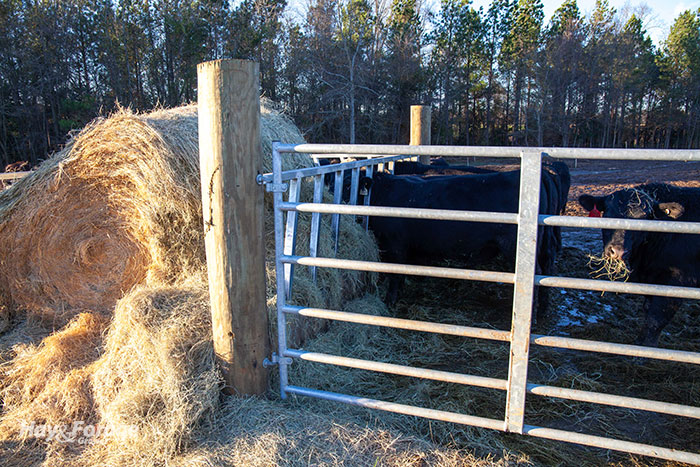
Most beef producers don’t realize how much of their production cost is accounted for by hay and feed. In fact, these two items amount to nearly half of the total production expenses in a cow-calf operation.
“A lot of producers don’t see the magnitude of hay and feed expenses because money is expended over a long period of time in smaller amounts,” said Chris Teutsch during a recent presentation to Kentucky beef producers. The University of Kentucky forage specialist noted that there are three ways to be profitable in a cow-calf operation: get more money for calves, produce more units (calves) on a given land base, and control production costs.
“Reducing production costs is probably our best alternative in most situations,” Teutsch asserted. “The easiest means of doing that is to go after the largest piece of the expense pie, and that’s hay and feed. The most effective approach is by grazing more days out of the year, but there are other things we can do as well.”
One of the 20-year trends being seen in some states is that more hay is being produced per beef cow unit. Teutsch cited information from Derrell Peel at Oklahoma State University who documented several reasons for the higher hay-feeding trend. These were:
• Larger and heavier cows, which accounts for a 20% boost in hay needs.
• More hay waste in storage and feeding, which accounts for 40% of the increase in needed hay.
• Feeding periods that are 30 to 40 days longer, which accounts for 40% of the additional hay being fed.
Teutsch pointed out that while hay feeding seems to be on the rise, so does the number of frost-free days during the growing season. Curiously, this should translate to less hay feeding if cows are on pasture more days of the year.
No perfect system
From a winter hay-feeding perspective, Teutsch sees two camps. There are those who prefer the higher cost, stationary system where animals are left somewhat confined and hay is fed on a poured concrete pad. A second group touts some sort of “untethered” hay feeding system whereby bales are consumed on pasture and feeding areas moved around to capture the nutrient value of the hay through manure deposition on pastures.
Teutsch feels the “right” system might be somewhere in the middle. He likes the idea of spreading the feeding points out on pasture but also acknowledges that having a place to go with cattle when the weather gets “ugly” is a benefit to keep pastures from getting ruined. That said, the forage specialist emphasized to work hard toward minimizing large investments in infrastructure and evaluating every dollar spent against potential economic returns.
“The truth is, there’s no perfect way to feed hay,” Teutsch acknowledged. “We see advantages and disadvantages to every system, and it’s up to us to manage whatever system we have to the best of our ability.”
Waste not, want not
Hay feeding losses are directly related to forage degradation during storage. Teutsch emphasized the importance of storing bales in such a way to minimize dry matter and forage quality losses.
“As forage quality increases, hay refusal decreases,” Teutsch said. “This reduces the amount of hay and supplement needed. Of course, it’s hard to know quality and feed it to the right class of animals if you don’t sample and test it.”
In addition to ensuring high forage quality, Teutsch emphasized that farmers need to have some type of barrier between the animal and the hay being fed. This could be a bale wagon or bale ring, for example. Feeders with slanted bars result in the lowest amount of feed loss because animals are less likely to pull their heads directly out and drop hay on the ground. Cone feeders and solid rings around the bottom will also help to reduce wastage.
In summary, Teutsch offered the following best management practices for feeding hay:
• Feed on a well-drained area to avoid mud and pugging.
• Match hay to the nutritional needs of the animal class.
• Feed hay stored outside first. Barn-stored hay maintains quality indefinitely.
• Use hay rings or a feeder wagon.
• Allow access to only enough hay for two to three days.
• Make mature animals that are in good condition “clean their plate.” Don’t force growing animals to consume low-quality forage.
• Continuously move hay feeding points within the pasture.
• Avoid feeding processed hay on the ground. Too many fines are lost.

